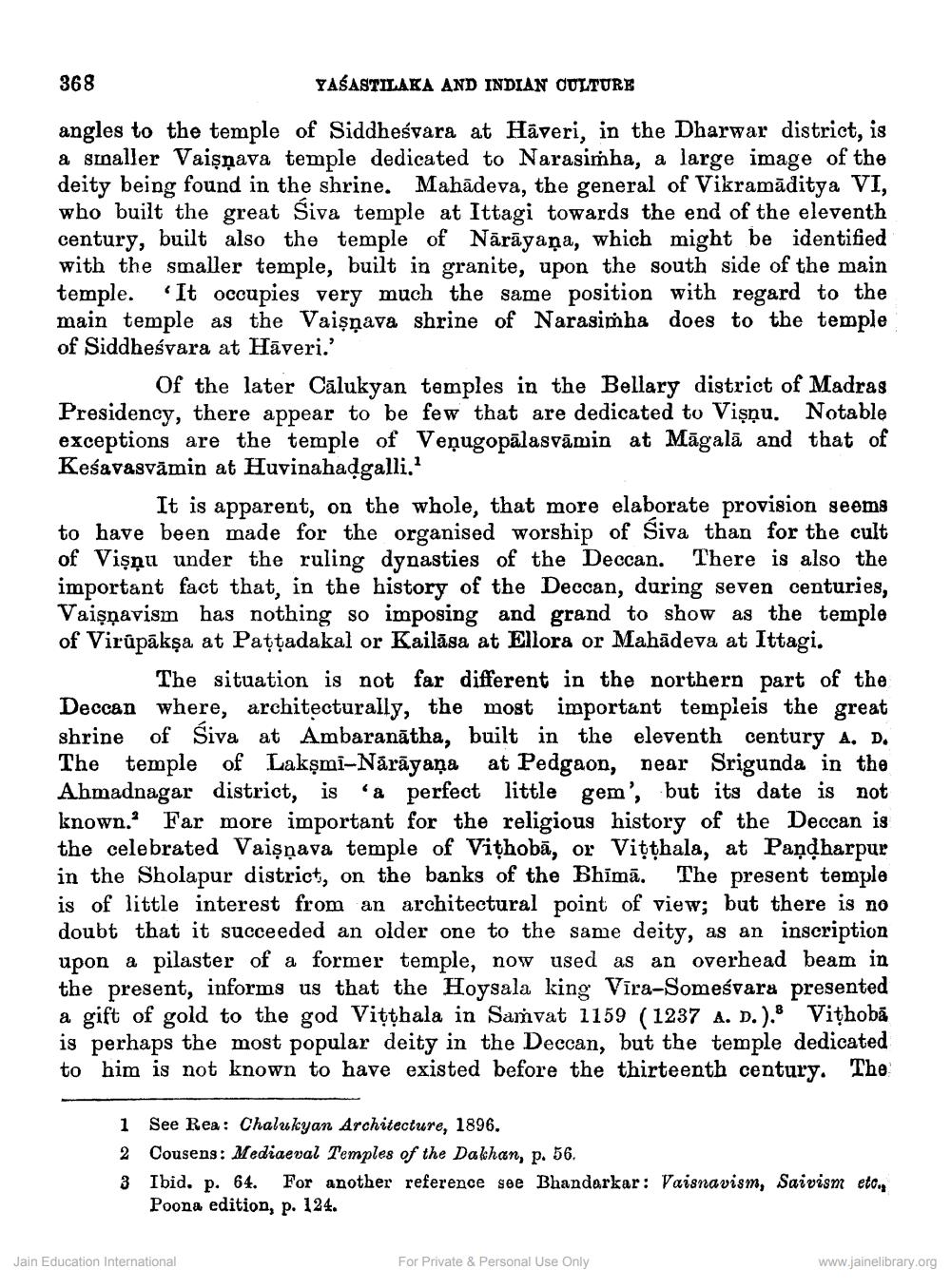________________
368
YAŠASTILAKA AND INDIAN CULTURE
angles to the temple of Siddheśvara at Haveri, in the Dharwar district, is a smaller Vaişņava temple dedicated to Narasimha, a large image of the deity being found in the shrine. Mahādeva, the general of Vikramăditya VI, who built the great Siva temple at Ittagi towards the end of the eleventh century, built also the temple of Nārāyaṇa, which might be identified with the smaller temple, built in granite, upon the south side of the main temple. It occupies very much the same position with regard to the main temple as the Vaişņava shrine of Narasimha does to the temple of Siddheśvara at Hāveri.'
Of the later Cālukyan temples in the Bellary district of Madras Presidency, there appear to be few that are dedicated to Vişņu. Notable exceptions are the temple of Venugopālasvāmin at Māgalā and that of Keśavasvämin at Huvinahadgalli.
It is apparent, on the whole, that more elaborate provision seems to have been made for the organised worship of Siva than for the cult of Vişņu under the ruling dynasties of the Deccan. There is also the important fact that, in the history of the Deccan, during seven centuries, Vaişņavism has nothing so imposing and grand to show as the temple of Virūpākṣa at Pattadakal or Kailāsa at Ellora or Mahādeva at Ittagi.
The situation is not far different in the northern part of the Deccan where, architecturally, the most important templeis the great shrine of Siva at Ambaranātha, built in the eleventh century A. D. The temple of Lakşmi-Nårāyana at Pedgaon, near Srigunda in the Ahmadnagar district, is 'a perfect little gem', but its date is not known. Far more important for the religious history of the Deccan is the celebrated Vaişņava temple of Vithobā, or Vitthala, at Pandharpur in the Sholapur district, on the banks of the Bhimā. The present temple is of little interest from an architectural point of view; but there is no doubt that it succeeded an older one to the same deity, as an inscription upon a pilaster of a former temple, now used as an overhead beam in the present, informs us that the Hoysala king Vira-Someśvara presented a gift of gold to the god Vitthala in Samvat 1159 (1237 A. D.): Vithobā is perhaps the most popular deity in the Deccan, but the temple dedicated to him is not known to have existed before the thirteenth century. The
1 See Rea: Chalukyan Architecture, 1896. 2 Cousens: Mediaeval Temples of the Dakhan, p. 56. 3 Ibid. p. 64. For another reference see Bhandarkar: Vaisnavism, Saivism etc.,
Poona edition, p. 124.
Jain Education International
For Private & Personal Use Only
www.jainelibrary.org




